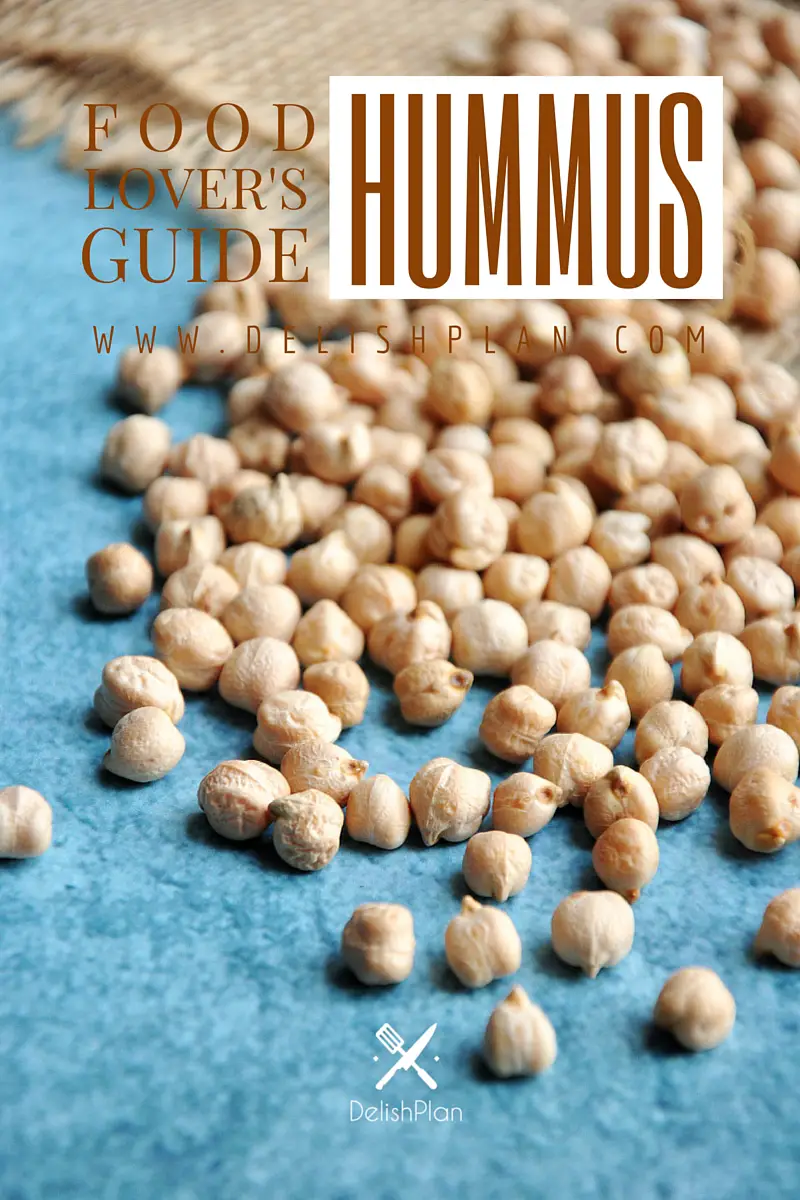Food Lover’s Guide to Hummus
Do you enjoy hummus? I’ve compiled the almost ultimate guide to hummus that gives you pretty much every aspect of hummus.
If you haven’t tried hummus before, you owe it to yourself to try this Middle Eastern food that has made its way onto tables around the world. It’s a smooth and creamy spread that is healthful and versatile, and so easy to make at home.
Hummus is an Arabic word that translates to “chickpea.” Hummus is widely believed to have originated in Egypt, and then spread throughout the Middle East, where it became especially popular in Turkey and Morocco.
INGREDIENTS
The main ingredients in hummus are chickpeas, tahini, olive oil, lemon juice, garlic and salt. These are the base ingredients, and from there you can add complementary ingredients to make your hummus look and taste unique. The basic recipe, though, is super flavorful and most people enjoy it just as it is.
Chickpeas or Garbanzo Beans?
One of the things that people ask all the time is, “What’s the difference between chickpeas and garbanzo beans, and are they interchangeable?” They are the same thing. Garbanzo is the Spanish name of chickpea.
Canned or Fresh Chickpeas?
We always like to encourage you to use fresh ingredients, and you know as well as we do that fresh is always better. We know that you’re busy, though—like, with a life and stuff—so if you opt for canned chickpeas in your homemade hummus, we certainly won’t judge you.
There are big drawbacks to canned food, not the least of which is the sodium content. Canned food manufacturers use salt as a preservative because it’s so effective. But that extra sodium in canned foods really adds up to significant amounts, particularly if you get daily sodium from other sources in your diet.
If you’re interested in using fresh chickpeas, it’s worth it just to see how easy it is to cook them using dried chickpeas. If you have a pressure cooker, you can cook them in there in less than an hour, with just a half-inch of water and ½ cup of dried chickpeas. Or, you can cook them in a slow cooker.
Soak the dried chickpeas overnight in water. Place ½ cup of dried chickpeas in the slow cooker, sprinkle with some baking soda, and add the water you soaked them in. (The water should be at least ½ inch over the chickpeas.) Cook on low for 8 hours, or until the chickpeas are tender.
If you do use dried chickpeas in our hummus recipe, calculate as: ½ cup of dried chickpeas equals one 15-ounce can of chickpeas.
Note: In both instances, whether you use dried or canned, save that water! The water contains valuable nutrients and starches that help to nourish and flavor your hummus.
Tahini
Tahini – the very word sounds all mysterious and exotic, right? Tahini is another Arabic word that, roughly translated, means “to grind.”
Tahini is made from hulled sesame seeds ground with olive oil, and sometimes garlic. Basically, you can think of tahini as being similar to a runny peanut butter.
Most supermarkets carry tahini, but if you have trouble finding it, or you just never seem to have it at home when you need it, you can make it yourself. Even better, you can just add the ground sesame seeds and olive oil to your hummus recipe separately and achieve the same result.
Note: For the tastiest ground sesame seeds, start with unsalted hulled seeds and toast them lightly in a cast iron skillet before grinding them.
WHAT OTHER INGREDIENTS CAN YOU ADD IN YOUR HUMMUS?
If you want to get all fancy and sophisticated with your hummus, you can add extra ingredients that add nutritive value and enhance the appearance and flavor. However, not all the suggestions will appeal to everyone’s tastes.
The easiest way to experiment without risking your whole batch is, the next time you make hummus, separate out a portion or two into containers. Stir in your choice of:
- Sun-dried tomatoes, chopped
- Scallions, chopped
- Mediterranean (Greek) olives, chopped
- Herbs and spices, such as rosemary, basil, cumin
- Roasted red pepper, chopped
- Roasted beetroot, chopped (or add the beetroot before you process it, for a red-colored hummus)
THE HEALTH BENEFITS OF HUMMUS
There are some foods in the world that your body just naturally responds to, and you know that you’re eating something really good for you. Hummus is one of those foods. If you’re like most people, after enjoying hummus you’ll just feel better.
Of course, there are medically proven benefits to hummus that you can count on, too.
- Hummus is rich in protein. One tablespoon provides 1.2 grams of protein.
- Hummus supplies 2% each of your magnesium and iron daily requirements.
- Hummus is a low-cholesterol food.
- Hummus has loads of fiber content to help mobilize fat loss.
IDEAS FOR ENJOYING HUMMUS
We don’t need to tell you that hummus is perfect as a dip for crudités. But there are lots of other ways to enjoy your hummus. Here are some to get your creative juices flowing:
- Core out grape tomatoes with a small melon baller and stuff with hummus.
- Substitute hummus for mayonnaise on your sandwiches.
- Spread hummus on flour tortillas and layer with sprouts and sliced veggies for homemade vegetarian wraps.
- Mix tuna, celery, and hummus together in a bowl for a unique twist on tuna salad.
- Substitute hummus for cream cheese in your homemade jalapeno poppers.
- Stuff celery sticks with hummus instead of peanut butter.
KIDS AND HUMMUS
If you’re looking for ways to get your kids away from their sugar addiction (and even if you’re not), hummus is the solution.
The simple flavors of basic hummus are very appealing to young eaters. It turns out that kids have very sensitive taste buds (and more of them). So when little Timmy turns his nose up at grandma’s chicken soup, it could be that the onion is just too much for his palette to handle.
- When you introduce your youngster to hummus, try pairing it with some of their established favorites.
- Serve hummus as a side dip for chicken nuggets instead of sugary sauces.
- Substitute hummus and homemade jam for peanut butter and jelly.
- Make hummus available on the breakfast table as a spread for toast.
- Make hummus “pizza” by spreading Lavash bread with hummus and topping with mozzarella and pepperoni. Bake for 10 minutes or until the cheese melts.
Now it’s your turn. Tell us what you think about these hummus ideas. We know you’ll love how easy it is to make hummus and the simplicity of this Middle Eastern gem. How do you enjoy hummus in your household? Leave a comment below and let us know.
About the Author
Sharon Chen is an Integrative Nutrition Health Coach and author of the Complete Sous Vide Cookbook. She believes food not only brings healing but also connection. As the creator of StreetSmart Kitchen, she aims to make meal prep easier than ever and help you find balance, ease, joy, and simplicity in the kitchen as you improve your well-being.





Pingback: 8 Reasons Hummus Is The One Thing You Should Add To Your Wellness Routine | Viral Monster.Guru
I can’t wait to try and make hummus. I never knew it was so easy! Great ideas of ingredients to add in!
Thanks Shawnese. A hummus recipe with a cooking video is coming on the site very soon. I hope you like it. 🙂